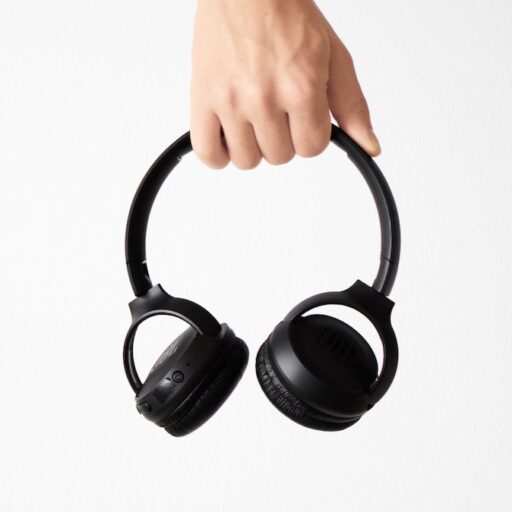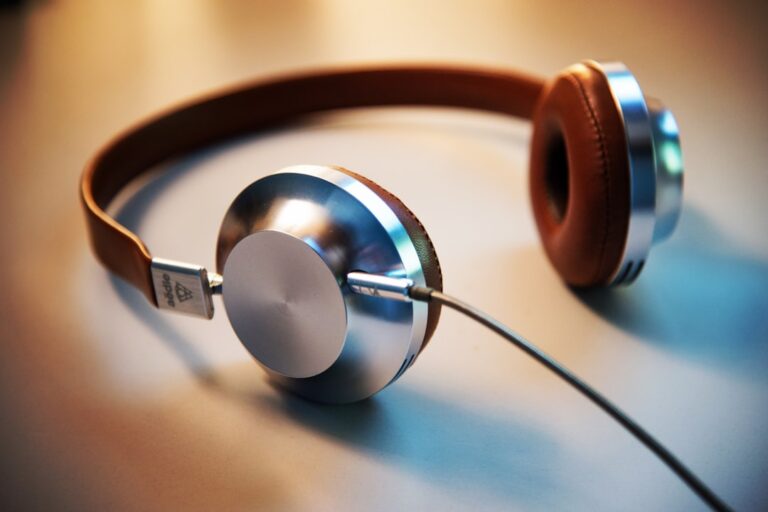Support our educational content for free when you purchase through links on our site. Learn more
Why are Bose Headphones Cutting Out? [2024]
Have you ever experienced the frustration of your favorite tunes being interrupted by sudden audio dropouts? It’s a common issue that many headphone users face, and Bose headphones are no exception. In this article, we’ll explore the reasons why Bose headphones may be cutting out and provide you with expert advice on how to troubleshoot and resolve these issues. So, grab your headphones and let’s dive in!
Quick Answer
Bose headphones may cut out due to various factors, including Bluetooth range limitations, physical obstructions, interference, poor Bluetooth connection, outdated Bluetooth versions, low battery levels, Wi-Fi connection issues, app conflicts, and outdated headphone models. By understanding these potential causes, you can take the necessary steps to prevent or resolve audio dropouts.
Shop Bose Headphones on: Amazon | Walmart | Guitar Center | Sweetwater | eBay
Quick Tips and Facts
Before we delve into the details, here are some quick tips and facts to keep in mind:
-
Bluetooth headphones typically have a maximum range of up to 30 feet. However, this range can be affected by physical obstructions such as walls, floors, or metal objects. Maintaining a direct line of sight between your headphones and the connected device is recommended for optimal performance.
-
Interference from other devices can also disrupt the Bluetooth signal. If you’re experiencing audio dropouts, try moving away from other audio sources or devices that may be causing interference.
-
Weak Bluetooth connections can result in audio stutters or cutouts. If you’re encountering this issue, try restarting both your headphones and the connected device, and then reconnecting them.
-
Outdated Bluetooth versions may not provide the best audio performance. While Bluetooth 4 is the minimum recommended version, upgrading to headphones with Bluetooth 5.4 or higher can offer improved connectivity and audio quality.
-
Low battery levels can also contribute to audio problems. Make sure to charge your headphones to at least 30% before use to avoid potential issues.
-
A poor Wi-Fi or internet connection can cause audio buffering or interruptions, especially if you’re streaming music or using online services. If you’re experiencing audio dropouts, try resetting your router and Wi-Fi settings on the connected device.
-
Running too many apps in the background can disrupt the Bluetooth connection. To ensure a smooth listening experience, close unnecessary apps and ensure that you have the latest version of the app you’re using.
-
Older headphone models may struggle with streaming and Bluetooth updates. If you’re consistently experiencing audio dropouts, it may be time to consider upgrading to a new pair of Bluetooth headphones with additional features and improved connectivity.
Now that we’ve covered the quick tips and facts, let’s dive deeper into each potential cause of Bose headphones cutting out and explore the solutions.
Bluetooth Range Limitations
Bluetooth technology has come a long way, but it still has its limitations. One of the primary factors that can cause Bose headphones to cut out is the Bluetooth range. While the range can vary depending on the specific model, most Bluetooth headphones have a maximum range of up to 30 feet.
✅ Quick Tip: Maintain a direct line of sight between your headphones and the connected device to minimize potential signal interference.
Physical obstructions such as walls, floors, or metal objects can significantly impact the Bluetooth signal. If you’re experiencing audio dropouts, try moving closer to the connected device or ensuring that there are no physical barriers between your headphones and the device.
Interference
Interference from other devices can also disrupt the Bluetooth signal and cause audio dropouts. This interference can be caused by various factors, including other wireless devices, microwaves, or even crowded areas with multiple audio signals.
✅ Quick Tip: Move away from other audio sources or devices that may be causing interference to improve the Bluetooth connection.
If you’re in a crowded area or experiencing interference from other devices, try moving to a quieter location or turning off other wireless devices to minimize potential signal disruptions.
Poor Bluetooth Connection
Sometimes, a weak Bluetooth connection can result in audio stutters or cutouts. This can happen due to various reasons, such as temporary signal interference or a glitch in the Bluetooth connection.
✅ Quick Tip: Restart both your headphones and the connected device, and then reconnect them to establish a fresh Bluetooth connection.
If you’re experiencing audio dropouts, try turning off both your headphones and the device you’re connecting to. After a few seconds, turn them back on and attempt to reconnect. This simple step can often resolve temporary connection issues and restore a stable Bluetooth connection.
Outdated Bluetooth Versions
Bluetooth technology is constantly evolving, with each new version offering improved connectivity and audio performance. While Bluetooth 4 is the minimum recommended version for most headphones, upgrading to headphones with Bluetooth 5.4 or higher can provide a more reliable and stable connection.
✅ Quick Tip: Consider upgrading to headphones with the latest Bluetooth version for improved audio performance and connectivity.
If you’re consistently experiencing audio dropouts and your headphones have an outdated Bluetooth version, it may be worth considering an upgrade. Newer Bluetooth versions offer enhanced features, better range, and improved audio quality, ensuring a seamless listening experience.
Low Battery Levels
Low battery levels can also contribute to audio problems, including audio dropouts. When your headphones’ battery is running low, the Bluetooth connection may become unstable, resulting in intermittent audio interruptions.
✅ Quick Tip: Charge your headphones to at least 30% before use to avoid potential audio dropouts.
To prevent audio cutouts due to low battery levels, make it a habit to charge your headphones to at least 30% before using them. This ensures that your headphones have sufficient power to maintain a stable Bluetooth connection.
Wi-Fi Connection Issues
While Wi-Fi and Bluetooth are separate technologies, they can sometimes interfere with each other, especially if you’re using both simultaneously. A poor Wi-Fi or internet connection can cause audio buffering or interruptions, leading to audio dropouts.
✅ Quick Tip: Reset your router and Wi-Fi settings on the connected device to improve the Wi-Fi connection and minimize potential audio interruptions.
If you’re experiencing audio dropouts while connected to Wi-Fi, try resetting your router and the Wi-Fi settings on the device you’re using. This can help resolve any temporary Wi-Fi issues and ensure a smoother listening experience.
App Conflicts
Running too many apps in the background can consume system resources and potentially disrupt the Bluetooth connection. If you’re encountering audio dropouts, it’s worth checking if any background apps are causing conflicts.
✅ Quick Tip: Close unnecessary apps and ensure that you have the latest version of the app you’re using for a smoother Bluetooth connection.
To optimize your Bluetooth connection, close any unnecessary apps running in the background. Additionally, make sure that you have the latest version of the app you’re using, as updates often include bug fixes and performance improvements that can enhance the Bluetooth connection.
Outdated Headphone Models
As technology advances, older headphone models may struggle to keep up with the latest streaming protocols and Bluetooth updates. If you’re consistently experiencing audio dropouts with an older pair of headphones, it may be time to consider an upgrade.
✅ Quick Tip: Upgrade to a new pair of Bluetooth headphones with additional features and improved connectivity to avoid audio dropouts.
By upgrading to a newer pair of Bluetooth headphones, you can take advantage of the latest advancements in wireless technology. Newer models often offer improved connectivity, better range, and enhanced audio quality, ensuring a seamless listening experience without audio dropouts.
FAQ

Why are my Bose headphones glitchy?
Glitchy audio can be caused by various factors, including Bluetooth range limitations, physical obstructions, interference, poor Bluetooth connection, outdated Bluetooth versions, low battery levels, Wi-Fi connection issues, app conflicts, or outdated headphone models. By troubleshooting each potential cause, you can identify and resolve the glitchy audio issue.
Why do my Bose headphones keep falling out?
If your Bose headphones keep falling out, it may be due to the fit or design of the headphones. Different headphone models have varying designs, and some may not fit securely in your ears. Consider trying different ear tips or exploring alternative headphone models that offer a more secure fit.
Why do my Bose headphones keep losing connection?
Bose headphones may lose connection due to factors such as Bluetooth range limitations, physical obstructions, interference, poor Bluetooth connection, outdated Bluetooth versions, low battery levels, Wi-Fi connection issues, app conflicts, or outdated headphone models. By addressing these potential causes, you can prevent or resolve connection issues.
How many years should Bose headphones last?
The lifespan of Bose headphones can vary depending on usage, care, and the specific model. On average, Bose headphones can last anywhere from 2 to 5 years. However, with proper care and maintenance, some users have reported using their Bose headphones for over 10 years. Regular cleaning, storing in a protective case, and avoiding excessive bending or twisting can help prolong the lifespan of your headphones.
Read more about “… Which Company Has the Best Wireless Headphones?”
Conclusion

In conclusion, Bose headphones may cut out due to various factors, including Bluetooth range limitations, physical obstructions, interference, poor Bluetooth connection, outdated Bluetooth versions, low battery levels, Wi-Fi connection issues, app conflicts, or outdated headphone models. By understanding these potential causes and following the expert tips provided, you can troubleshoot and resolve audio dropouts, ensuring a seamless and uninterrupted listening experience.
✅ Recommended Links:
???? Reference Links:
- Why Do My Headphones Keep Cutting Out? – Bose
- Bluetooth Range and Distance: How Far Can Bluetooth Go?
- How to Improve Bluetooth Connection for Headphones
- How to Extend the Battery Life of Your Headphones
- The Pros and Cons of Wireless Headphones
Remember, understanding the potential causes of audio dropouts and taking proactive steps to address them can significantly enhance your listening experience. So, keep these tips in mind and enjoy uninterrupted music bliss with your Bose headphones!
Shop Bose Headphones on: Amazon | Walmart | Guitar Center | Sweetwater | eBay



